
Knowing the importance of lighting for an accommodation facility and what are the trends that have imposed themselves most in the sector is essential for approaching a complete hotel lighting project.
Hospitality is a world in constant evolution and, compared to the past, the change seems to have become even more rapid, so much so that hotels and hotels must continually update, renew themselves, adapting to the changes taking place.
One of the must for lighting becomes increasingly knowing how to combine the choice of materials with energy saving, which brings undoubted advantages both in the short and long term: this also involves marketing aspects, which you should not underestimate.
Let’s now find out what are the main trends to keep an eye on for a complete design
Lighting trend for hotels
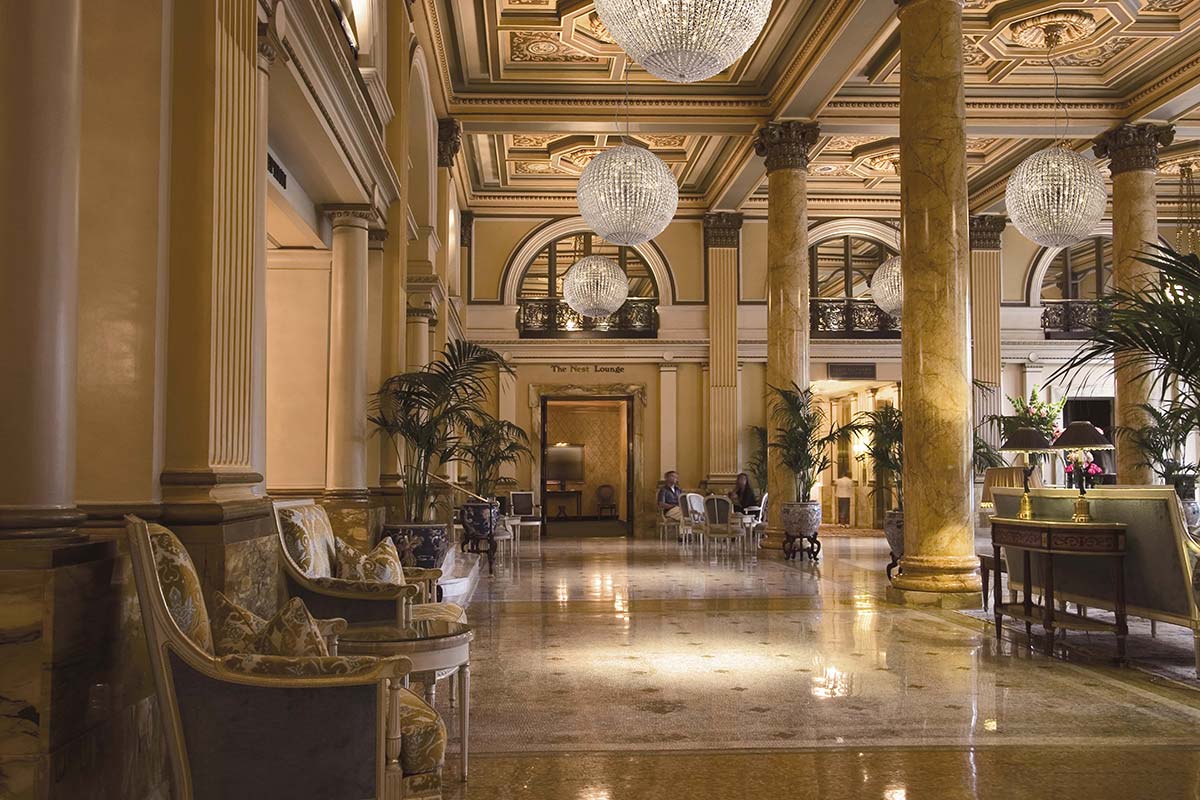
The ideal lighting depends above all on the nature of the hotel, its characteristics and its differential elements.
The positive experience of a hotel depends primarily on the visual impact: the light determines its quality and has a very specific effect in the response of our unconscious.
You must take into account a wide range of factors in your design: the limitation of glare, the distribution of light bodies, the color of the light with the relative color rendering and the correct direction of the light.
Actually using light means accompanying users’ movements at 360 degrees, therefore working also with shadows, with darkness, will help you create the right contrast: a creative and emotional use of light becomes fundamental.
Let’s see how to illuminate the various parts that make up a hotel and then analyze the ideal lighting for various types of hotels.
How to illuminate a hotel lobby
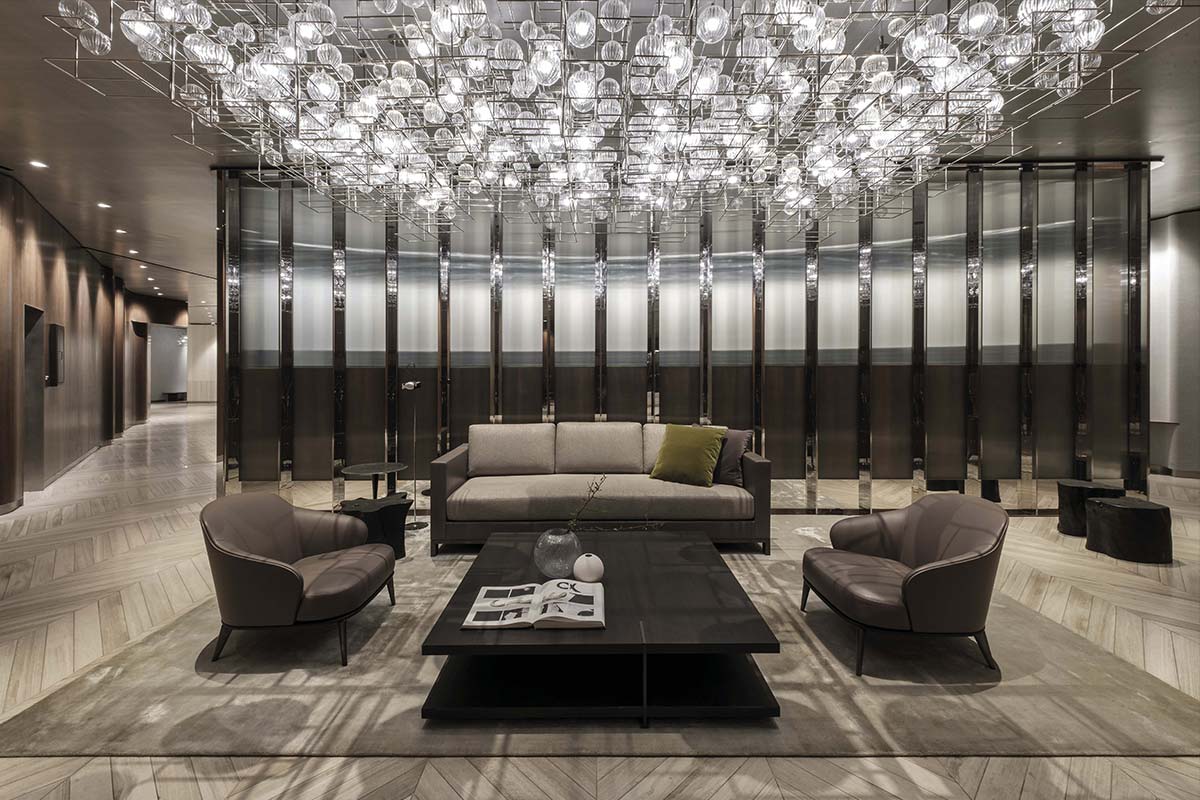
The hall of a hotel, often considered a place of passage, a simple transit to reach the rooms or other rooms of the structure, is actually a very important space, as it provides the first impression of the hotel, it makes it clear to guests where find, the message and the type of hotel. The light that you will design will be able to convey exactly the image that the hotel wants to give to its guests.
Therefore designing correct lighting is essential: depending on the identity of the hotel, you can choose to illuminate the reception desk with a dominant light or using an intimate and welcoming light, with a play of contrasts and warm tones, as if inviting lower your voice and respect the intimacy of the place.
The light will guide the guests, helping them to easily recognize the reception or the sitting rooms where to store their things and, therefore, the lighting will be softer. As for the quality of light, the hall must be balanced between vertical and horizontal lighting: a certain brilliance of the materials will serve to soften the shadows produced by the luminous bodies directed on the reception counter.
How to illuminate the corridors of a hotel
In the corridors, the light must be functional to identify the path to the rooms, the stairs, or the access to the elevators, therefore you need to vary the lighting levels, especially when the corridors are of wide lengths.
In these areas, a good shielding of the ceiling and wall light is important: lighting plays a strategic role in making the corridor seem higher or giving the perception that it is less long, for example with indirect lighting that raises the ceiling, patches of light, horizontal cuts, unevenness, etc.
How to illuminate hotel rooms
You must consider the fact that each of us perceives the light in a different way, therefore it will be necessary that the fixtures can be individually switched on and regulated directly by the guests, so as to facilitate their use: the environment is new for the guest, therefore it is good that you also provide a control panel at the side of the bed, easily interpretable.
In order for guests to feel familiar with this space, warm colored lighting, i.e. from 2700 to 3000 K, will be needed: avoid strong contrasts and glare due to direct or indirect light along the main viewing axes, but look for the right balance between contrasts to create movement and avoid bright monotony.
As for reading in bed, you can orient yourself on a directional luminaire, or on a wall lamp with diffused light.
To enlarge the space of the room, glass is sometimes used between the room environment and the bathroom: in this way, just turning on the light in the adjacent room to dilate the space, widening the boundaries.
In other cases the room even becomes one with the large outdoor terrace: in this case you can illuminate the outdoor space by resorting to direct light effects on the flooring, making light sessions participate in the play of light.
How to illuminate a hotel bathroom
In the space dedicated to the bathroom, the attention of your light project must be directed to the mirror: good lighting on the sink must be sufficient to illuminate the whole room, in order to obtain a dressing room effect, given by the emission of diffused light and a component of direct light of 20% max.
How to illuminate the common areas of a hotel
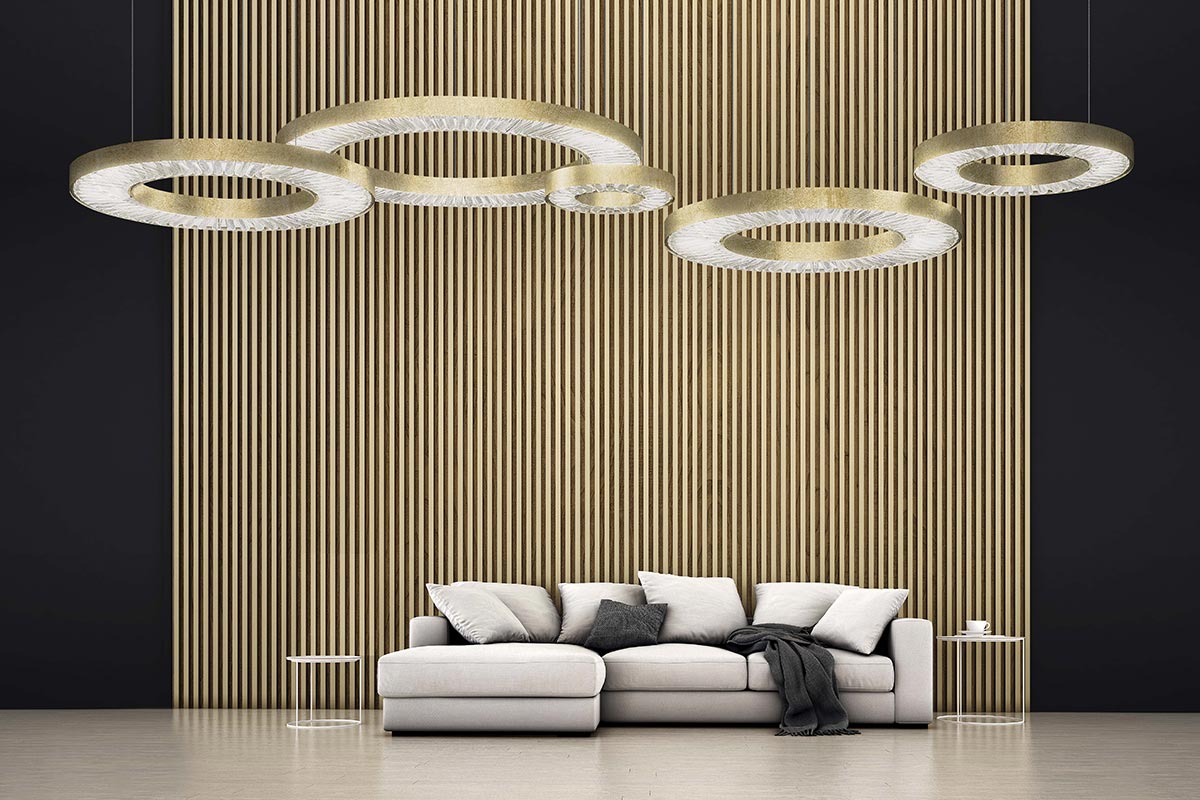
In the common areas, you can create interesting lighting effects by integrating the light into the hotel architecture with customized solutions for the environment.
How to illuminate a hotel bar
The atmosphere of the bar must be enveloping and relaxing, to offer guests moments of relaxation and induce them to a relaxed conversation through the use of good lighting levels in the spaces dedicated to the staff and behind the exhibitors, for a good color rendering and control of light, carefully avoiding that lights can dazzle customers.
You will have to create a greater variety of visual effects if the target to which the hotel is aimed is made up of a younger audience, with the aim of attracting and creating a different atmosphere, for example with color-changing LED systems.
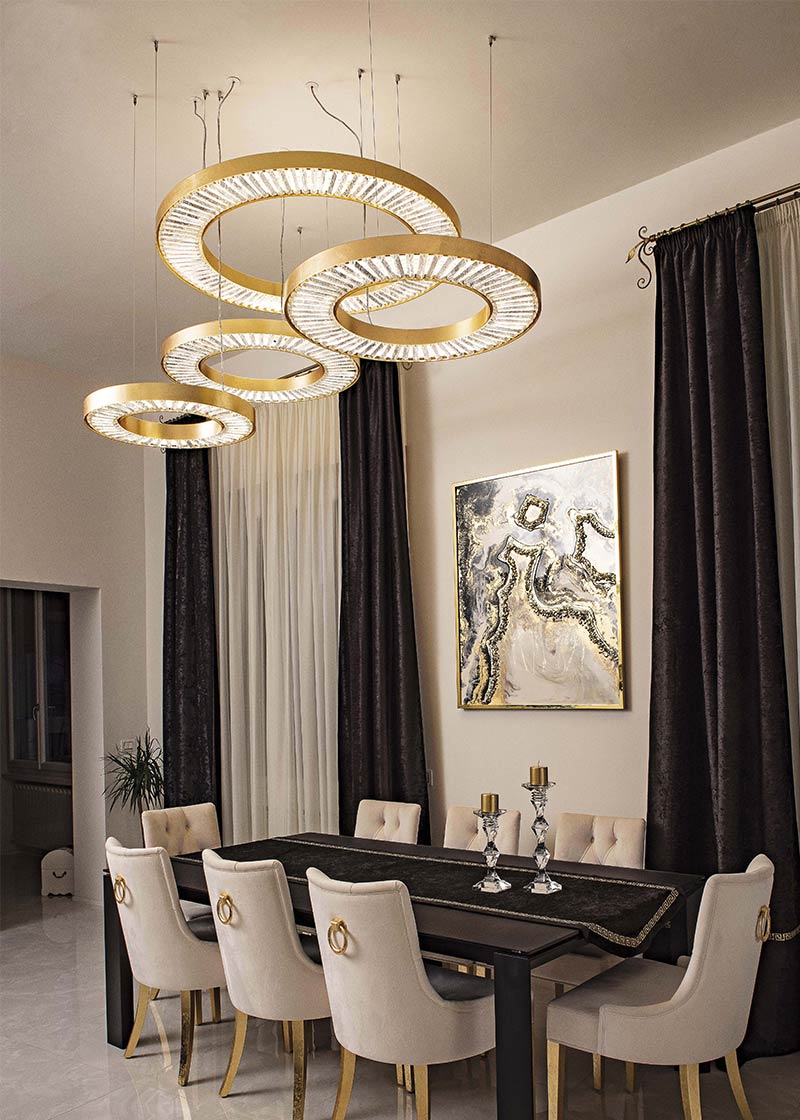
How to illuminate a non-ordinary style hotel
As the word itself says, an extra-ordinary hotel is the opposite of a standard hotel and the key word is, without less, uniqueness.
Extra-ordinary hotels are all those hotels that can offer tourists unique and always different offers, managing to create unique and unusual atmospheres, such as in the Igloo Village Kakslauttanen Arctic Resort in Finland.
Precisely for the uniqueness for which they diversify, hotels have become the object of careful and studied lighting in recent years.
The facades and atriums of large hotels are often comparable to lighting engineering works aimed at attracting attention and increasing the attraction of the structure, creating a sense of welcome, hospitality and class both outside and inside. indoor.
You must, therefore, be able to create scenographic lighting effects, using decorative light bodies, increasing contrasts, using colored lights strategically, as tools to create suggestive atmospheres, so as to be able to enhance the hotel’s aesthetic and functional uniqueness, but also guarantee maximum visual and emotional comfort to guests and staff.
How to illuminate a hybrid-style hotel
Nowadays, a hotel is no longer exclusively tourist accommodation, but can represent spaces aimed at various different activities, such as coworking, work space, student lounge, bookshop, shop, square, meeting point, and so on.
The hotel, therefore, becomes a hybrid space capable of accommodating and combining multiple functions such as, for example, The Student Hotel, in Florence: a hybrid hotel with an innovative concept, composed of several common spaces designed for both tourists and students and inhabitants.
This type of hotel not only guarantees the classic functions required of an accommodation facility, such as eating and sleeping, but creates a multitasking structure by opening its doors to retail and bookshop spaces, as well as to breweries and themed shops. This means taking on a more commercial and very different connotation than that of the traditional hotel.
In designing the rooms and the light, more and more designers are inspired by settings typical of hotels: many ideas are borrowed from other types of location, such as theaters and art galleries, or they resort to a skilful mix of various locations, in order to create an even more engaging setting.
How to illuminate a storytelling style hotel
When a hotel is able to tell a story, it manages to immerse its guests in stories and live always unique and emotionally engaging experiences.
The stories that a hotel can tell are those related to the place, to the owners of the accommodation, or it can be stories designed specifically for the type of clientele that you want to attract like the Hotel Indigo in Rome, where the beauties of the city they enter the rooms and other spaces of the hotel, from the restaurant to the gym: the great photographic images create the storytelling, through which guests can take a journey through the place, history and charm of the city, on the walls of the hotel.
To enhance storytelling, the lighting must be very characteristic and must give uniqueness and particularity to the environment, through a generic light that is clear but not too intense so as not to remove the magic of the location and the use of accent lights that succeed to involve the guests, drawing their attention to the narrative thread of the story with a wise and strategic use of the games between light and shadow.
An always valid solution to opt for is to allow a certain margin of luminous variability, so that guests can adjust the lighting levels and modes to their liking.
How to illuminate a technological hotel with social hospitality
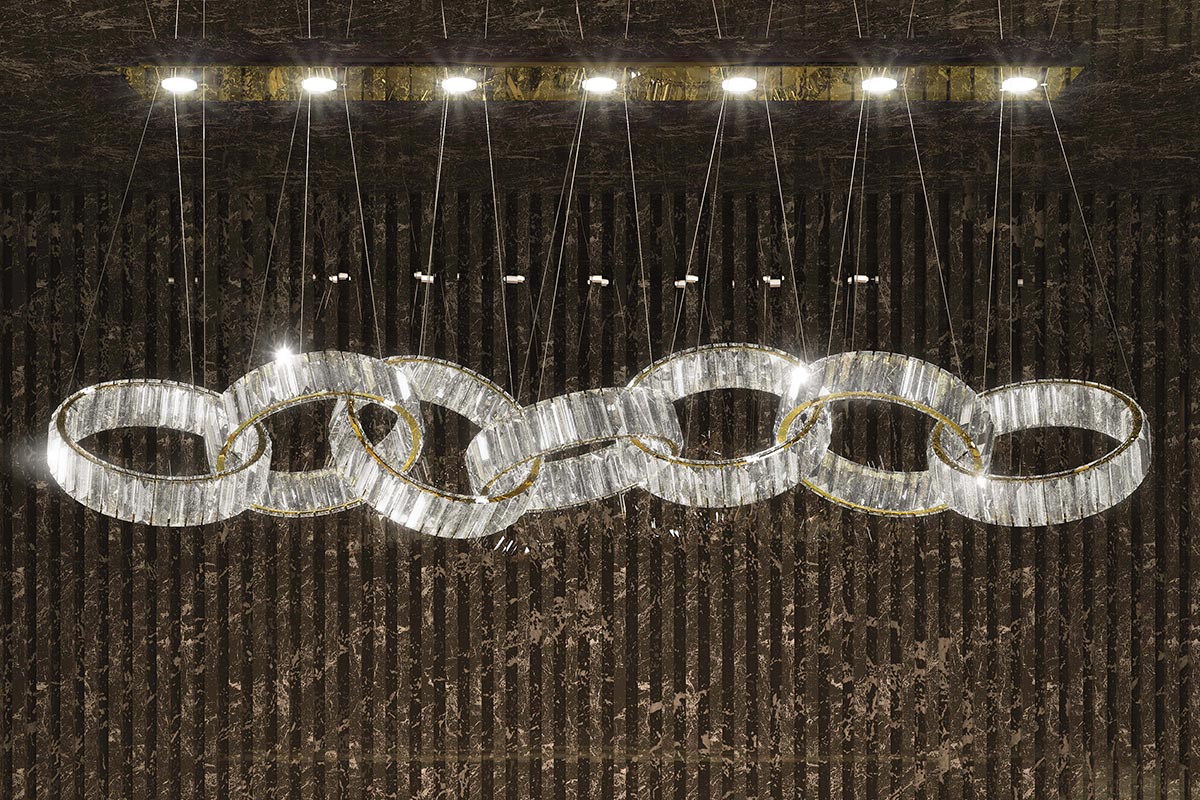
Home automation, booking engines and latest generation management software are the tools that every accommodation facility must be able to integrate within it.
For “digital” guests, increasingly hyper-connected and eager to share their experiences in real time, the room and common areas dedicated to leisure, socializing and also sharing on social networks, must be able to offer them both comfort necessary for their digital needs and content that they can capture and share with their online community.
As an improvement of the customer experience, the smartphone is the key in the literal sense: there are many solutions that allow a hotel guest to open their room with the phone, through a special app provided by the hotel, and to control the lighting of your room, a solution now provided by many manufacturers of lighting installations and integrated by many designers, which allows guests to also adjust the intensity, color and other lighting effects.
Solutions to illuminate an eco-sustainable hotel
Eco-sustainable solutions often also lead to significant energy savings: due to the characteristics of the accommodation facilities, the consumption of electricity for lighting is one of the most expensive items.
For this reason, one of the trends that has become more prevalent in modern hotel design is precisely the presence of daylight sensors, which adapt to the variation of the external light, consequently adjusting the intensity of the internal lighting, in combination with room occupancy sensors.
Being able to turn the light on and off automatically according to the occupied environments, and adjust the intensity of the light beam according to natural light, makes these sensors extremely functional tools for energy saving, an optimal solution for the respect of the environment as much as for the economy of the hotel.
Having seen that lighting turns out to be the voice that has the greatest impact on the total electricity expenditure of a hotel, it is convenient to invest in technologies that reduce unnecessary consumption, such as making sure that the lights are off when nobody is in the room , or avoiding an excessive level of illumination when natural light is sufficient.
In addition to the two types of sensors just viewed, there are additional technologies and automatisms on the market that can bring a real advantage to limit energy consumption: some hotels, for example, allow you to turn on air conditioning, TV, lights and all the other electrical services in the room only by inserting a card that activates the electricity that powers it.
In addition, you have the possibility of adopting monitoring tools that keep track of the consumption deriving from the various sources, allowing you, subsequently, to analyze and optimize the overall consumption of electricity.
How to design hotel lighting
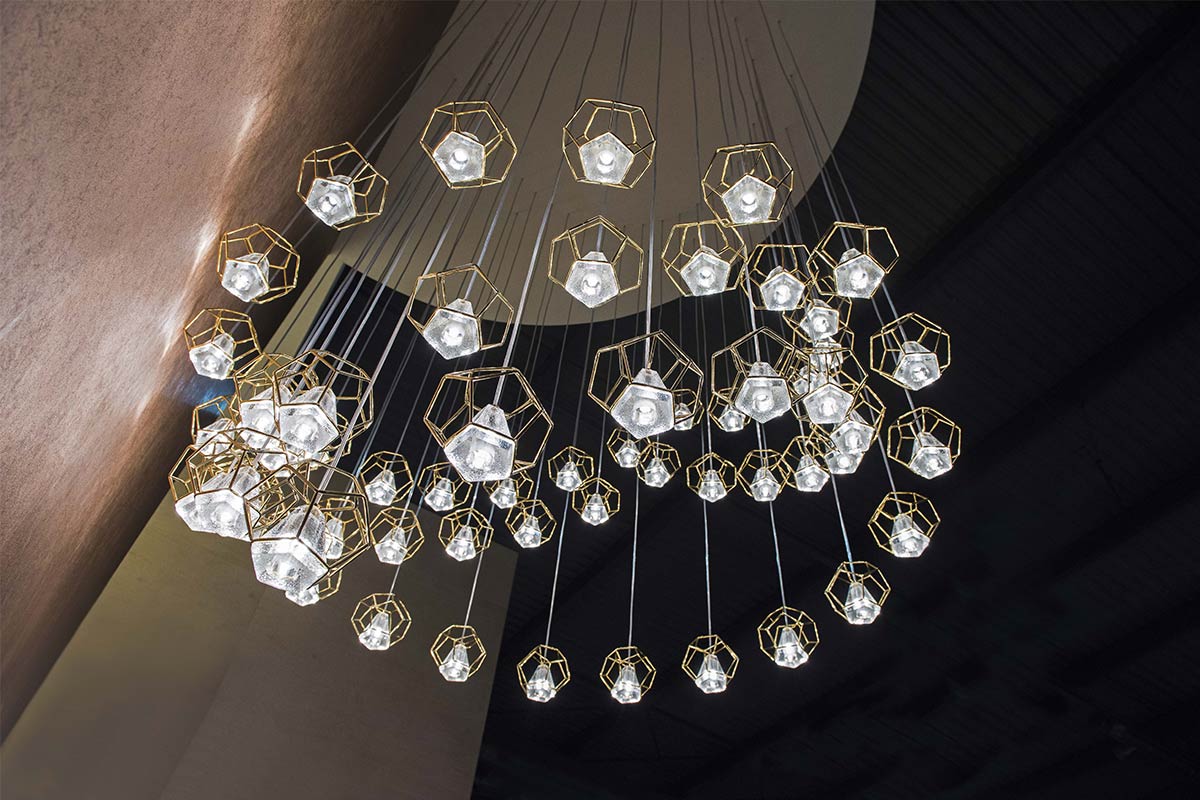
A good hotel does not necessarily have to have 5 stars, but must be able to make guests feel at home, with an enveloping and hospitable atmosphere.
The lighting of the hotel contributes significantly to the guest experience, not so much for the function linked to visibility, but for the emotions it is capable of arousing.
The atmosphere you need to be able to recreate with the right lights must be welcoming, pleasant and functional, so as to allow guests to orient themselves easily and comfortably in any room of the hotel.
In the hotel lobby, for example, the relationship between function and decoration given by the lighting must be so harmonious as to create an atmosphere that knows how to affect the first impression of the guest since his arrival: the light that welcomes guests are responsible for leaving a good memory in their memory.
In hotel rooms, however, the light must take on a more practical but flexible role, offering the possibility to adjust the light according to your needs.
Adopting a lighting system that can adapt to the needs of the guest, means allowing them to recreate the most pleasant atmosphere, dictated by their mood, autonomously and extemporaneously.
If the hotel has a ceremonial hall, an area for conferences and meetings, very flexible lighting will be required to meet the various activities carried out in this space.
In these cases, the lighting must be managed through the use of an adequate control system that all staff can easily operate.
As for the bar and restaurant area, the lights play a decisive role in distinguishing the spaces, shaping the most appropriate atmosphere for the different environments.
The walkways used by staff, for example, are generally brighter than light at tables or seats.
In restaurants it is preferable to use a soft light with a warm shade for dinners, so as to create a relaxing and intimate atmosphere. For breakfast and lunch, however, it is better to integrate with abundant natural lighting or to use lighting with brighter and more stimulating shades.
Solutions to design lighting for hotels with relaxation areas and swimming pools
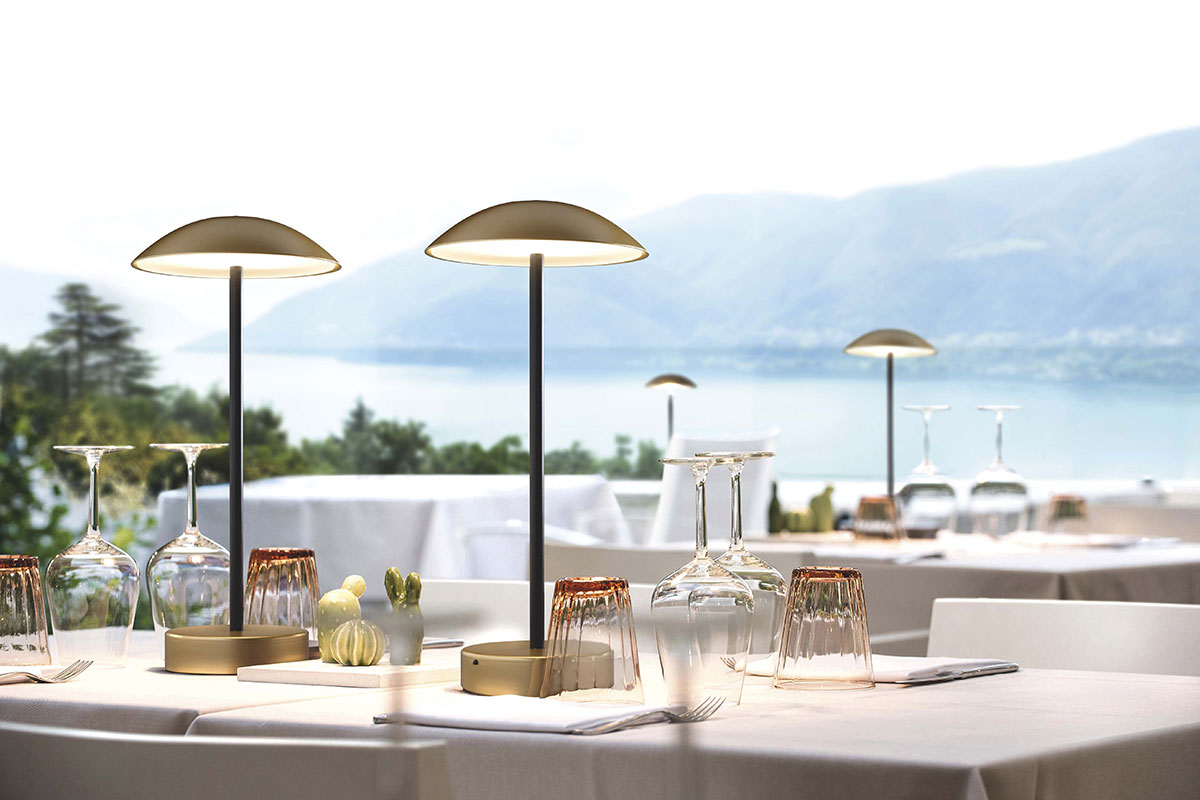
Let’s see, now, how to illuminate those areas that represent additional services offered by the hotel, but which for customers are decisive elements for their differential choice.
In this area, customers will pass from one space to another using the corridors. So let’s first see how to illuminate the articulated corridors of the relaxation area.
Illuminate the corridors in the relaxation area
In the corridors, the lights must help the customer to orient himself but without glare. Obtaining this result is simple: use wall-mounted step lights pointing downwards.
Or you can use decorative lights inserted in the furniture or veils / shutters on the ceiling that let the light fall on the walls, in order to create an always soft and indirect effect.
Lighting plays a fundamental role in the perception of the experience that the customer lives in the hotel: you have to think of the light as the conductor of the relaxation area, as it is the light that directs the customers and remains impressed in their eyes.
Illuminate the SPA and wellness area
When you need to design the lighting of a hotel SPA, you must necessarily separate this area from the rest of the structure, since the lighting in this area requires special and selective attention.
The most common mistake you need to avoid is to enrich the SPA area with too many light bodies, shooting an excessive amount of light that compromises the fundamental result that you need to achieve, namely the relaxation of the customer.
In this area it is essential that you manage to focus your attention on the quality of the light, rather than on the quantity: the environment must be welcoming, comfortable and must help the customer feel at ease even more than in other environments, since this is where he wants to feel as relaxed as possible.
Guests who will access the relaxation area do not need lighting that allows them to see 100 meters away: a few Lux are enough to allow people to relax and at the same time move safely within the whole area.
In relaxation areas, therefore, it is important that the light is soft and indirect, without any kind of glare: lighting between 10 and 20 Lux will be sufficient to meet customer needs. Furthermore, the light must necessarily have a warm color temperature, ranging from a minimum of 2700K to a maximum of 3000K.
With the new LED technologies, you can set up an adjustable lighting system which the customer can customize both the quantity and color of the light itself.
Illuminate the showers
In the areas reserved for showers, if you cannot get indirect light, you must at least try to direct the light sources towards the walls: this will allow you to create a very suggestive atmosphere, always without compromising visual comfort. You can also use a RGB-red, green and blue-colored LED light for chromotherapy.
Illuminate the swimming pool
As for the lighting of the swimming pool, the best solution both aesthetically and functionally is the underwater lighting system.
As for the lighting of the showers, also for the swimming pool you should choose the colored RGB LEDs, possibly RGB + W which offer the possibility of diffusing the white when necessary.
Illuminate the massage room
The massage areas must be immersed in indirect or filtered LED lighting, with soft lights, with very low and above all very warm intensity, since it is important that the client relaxes and feels completely at ease.
Also in this area, you can provide for personalized adjustment of the light intensity, through dimmers. In this way, the operator can choose the most suitable atmosphere both based on the type of massage and on the client’s personal needs. In addition, this solution is ideal because when it needs to massage the customer, it can keep the light low, when it has to clean the room, just increase the intensity of the lighting.
Hotel lighting: how to make a complete design
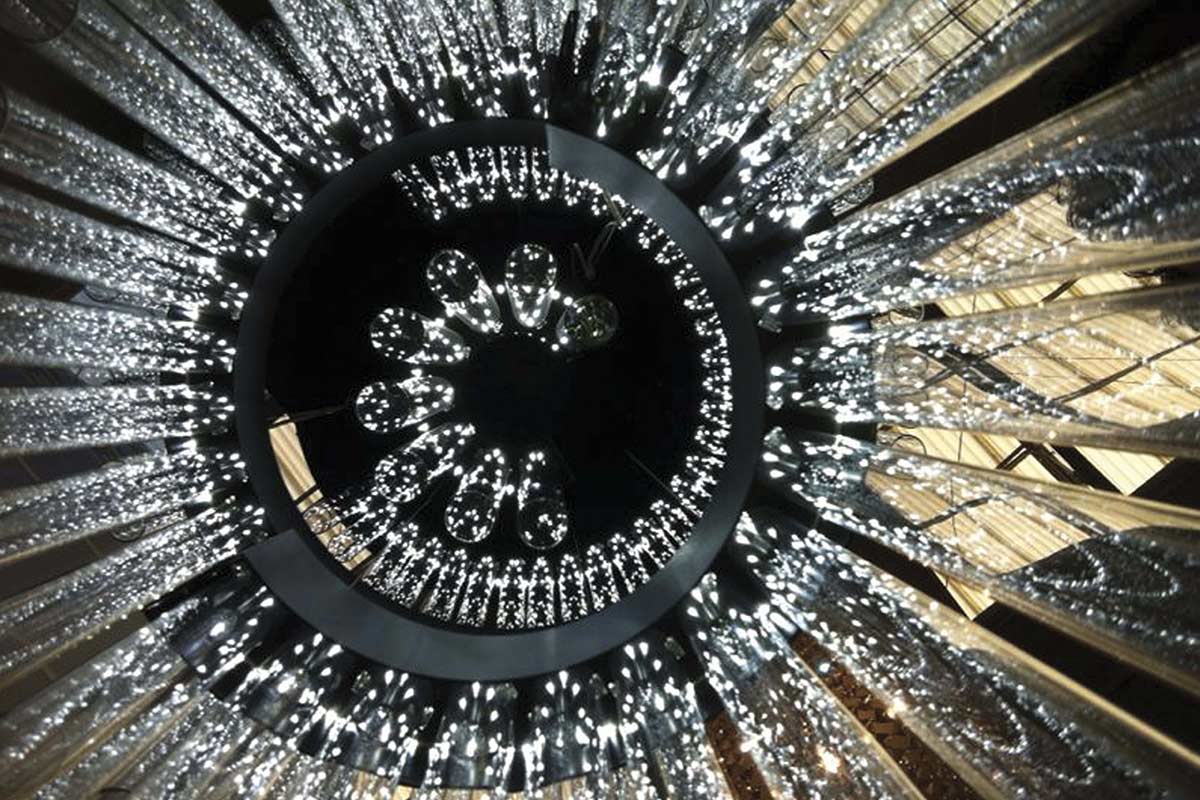
As we have seen, the customers of a hotel expect to receive a good welcome, to relax in the common areas, to have a comfortable and technological room and to be able to use practical and functional work environments.
Your hotel lighting project must ensure the right light in each of the rooms to offer the customer a positive experience that motivates him to return.
You can choose LED lights, which allow you to create different atmospheres able to satisfy all the emotional nuances and to personalize the various environments in a dynamic way.
In addition, LED lights lead to a significant reduction in energy consumption, both because of their nature and because they allow you to adjust the intensity of the lighting at various times of the day, always offering an optimal ratio between artificial light and natural light.
The hotel presents itself little by little to the customer, who follows a path that leads him gradually to discover the various environments.
In the reception, a first impression is made on the hospitality and style of the hotel, therefore the general lighting of the hall must make the reception point recognizable and intuitively outline the access to the rooms and common areas.
In the corridors the lighting must be harmonized with the geometry, in fact it can make the ceiling seem higher, contrast the tunnel effect and make the path more dynamic through the use of horizontal cuts of light that modify the perception of the length.
Vertical lighting facilitates the recognition of people and the backlit panels make it easy to recognize the room number.
In the room, the lighting must accommodate the various functions that the guest normally performs, such as reading, watching TV, accessing the internet, relaxing, and so on. To make this possible, it is optimal to use a single multifunction control that is easily interpretable, so that he can adjust and obtain the right level of light at all times.
We have also seen that the most innovative hotels provide special apps that allow you to open the room and adjust all electrical services via smartphone, such as air conditioning, the intensity and color of light, shutters, etc.
In the bathroom, mirror lighting plays a very important role, because it offers the possibility of identifying every detail well.
In the common areas, the lights must integrate with the architecture and furnishings. As for the relaxation area and the massage area, you must be able to illuminate the spaces using light sources with a soft beam and a warm tone, in order to allow guests the maximum level of relaxation, given above all by the feeling of feeling completely at ease .
All you need to know for a complete hotel lighting design is that the keywords are:
- diversification
- digitization
- storytelling
- multitasking
Obviously, without ever neglecting comfort, which must be the must-have element of all accommodation facilities.
In order for the hotel you are designing to become the first choice of customers, you must be able to structure a concept of internal and external light with a unique and functional design for each part of which the hotel is made up.
What remains impressed in the guests’ memories is lighting, because light is the element that can decide the perceptual experience of customers, a fundamental factor for their evaluation of the stay in the hotel.
It outlines the concept of the hotel and personalizes it with lighting that is as imaginative as it is suitable for the type of structure, choosing solutions to meet every kind of need: this will translate into an experience so pleasant for guests that it will motivate them to return.
Always keep in mind that each area of the hotel needs specific and functional lighting for the activities to which it has been designated.
Choose luminous bodies to better define the character of the hotel outside, and then concentrate on maintaining that stylistic line in each of the internal areas, including the bedrooms.
You can opt for different lamps to be integrated in order to create captivating light effects, in order to make the spaces as static as possible, except, of course, in the relaxation area.
Since this is the area used for relaxation, the choice of soft and non-dynamic lighting will give guests feelings of tranquility and quiet and facilitate their complete relaxation.
That said, if you follow this complete design guide, hotel lighting will be much simpler for you: remember the keywords that recall the various characteristics that we observed in this article to create a project as detailed as possible.
The innovative trends that differentiate the various hotels are decisive for the type of lighting you will have to foresee, as it will be precisely the light that enhances the concept of hotel diversification. In this sense, therefore, understanding what type of hotel it is, what its characteristic elements are and what type of clientele it intends to communicate to is essential so that you can create a specific project capable of marrying your client’s vision.
To be able to create a complete project, therefore, you will have to strategically combine all the points seen so far, finding the most suitable way to integrate all the features that will surely make your hotel lighting project a real success in every part, which will translate into the success of the accommodation commissioned to you.
